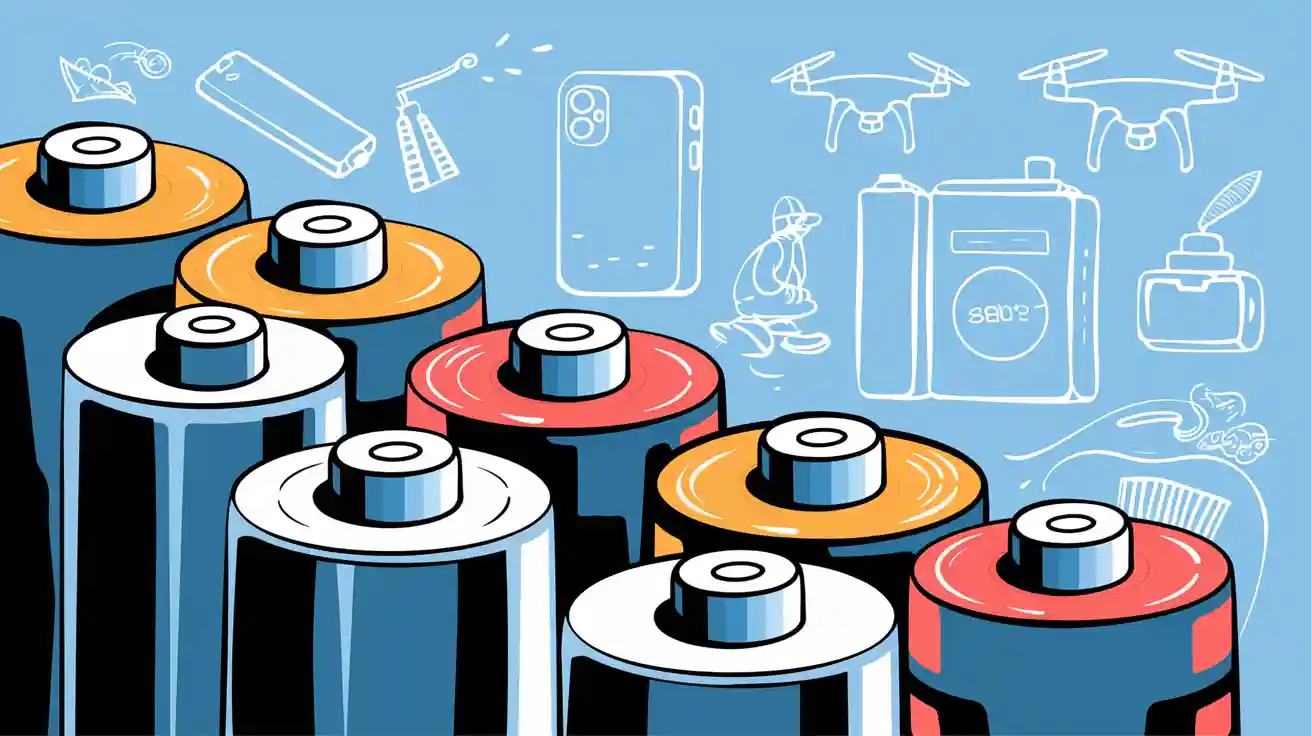
You rely on the 3.7v lithium-ion battery for critical applications in modern battery packs. This battery, particularly in the 18650 format, powers a wide range of devices and systems. The global demand for lithium ion battery solutions continues to rise, as shown below:
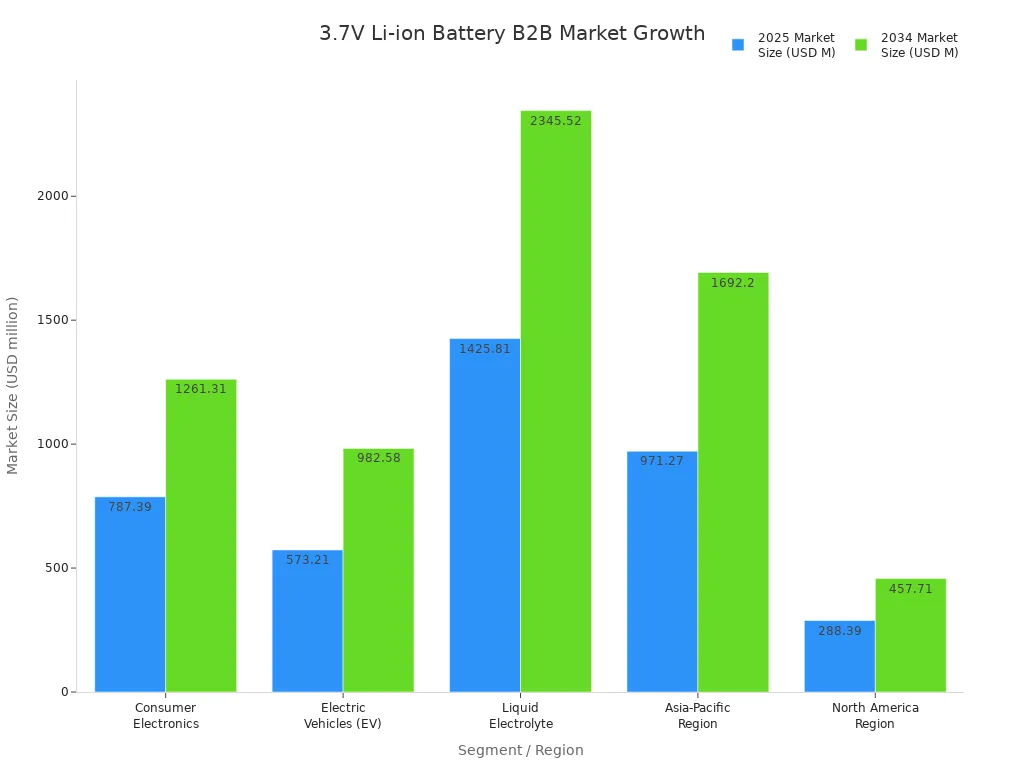
You must understand the 3.7 volt battery’s technical details, especially when selecting an 18650 battery for high-performance lithium-ion battery packs. The 18650 cell sets industry standards for energy density and reliability. Safety remains a top priority as you integrate lithium ion batteries into advanced systems.
Key Takeaways
3.7V lithium-ion batteries, especially 18650 cells, offer a strong balance of power, size, and reliability, making them ideal for many devices like power tools, electric vehicles, and consumer electronics.
Proper charging and safety measures, such as using the right chargers, avoiding overcharging, and integrating protection circuits, are essential to extend battery life and prevent hazards like overheating or fires.
Regular maintenance, including storing batteries at partial charge in cool places and avoiding deep discharges, helps keep batteries safe and lasting longer while supporting sustainable use through proper recycling.
Part 1: 3.7v Lithium-Ion Battery Specs
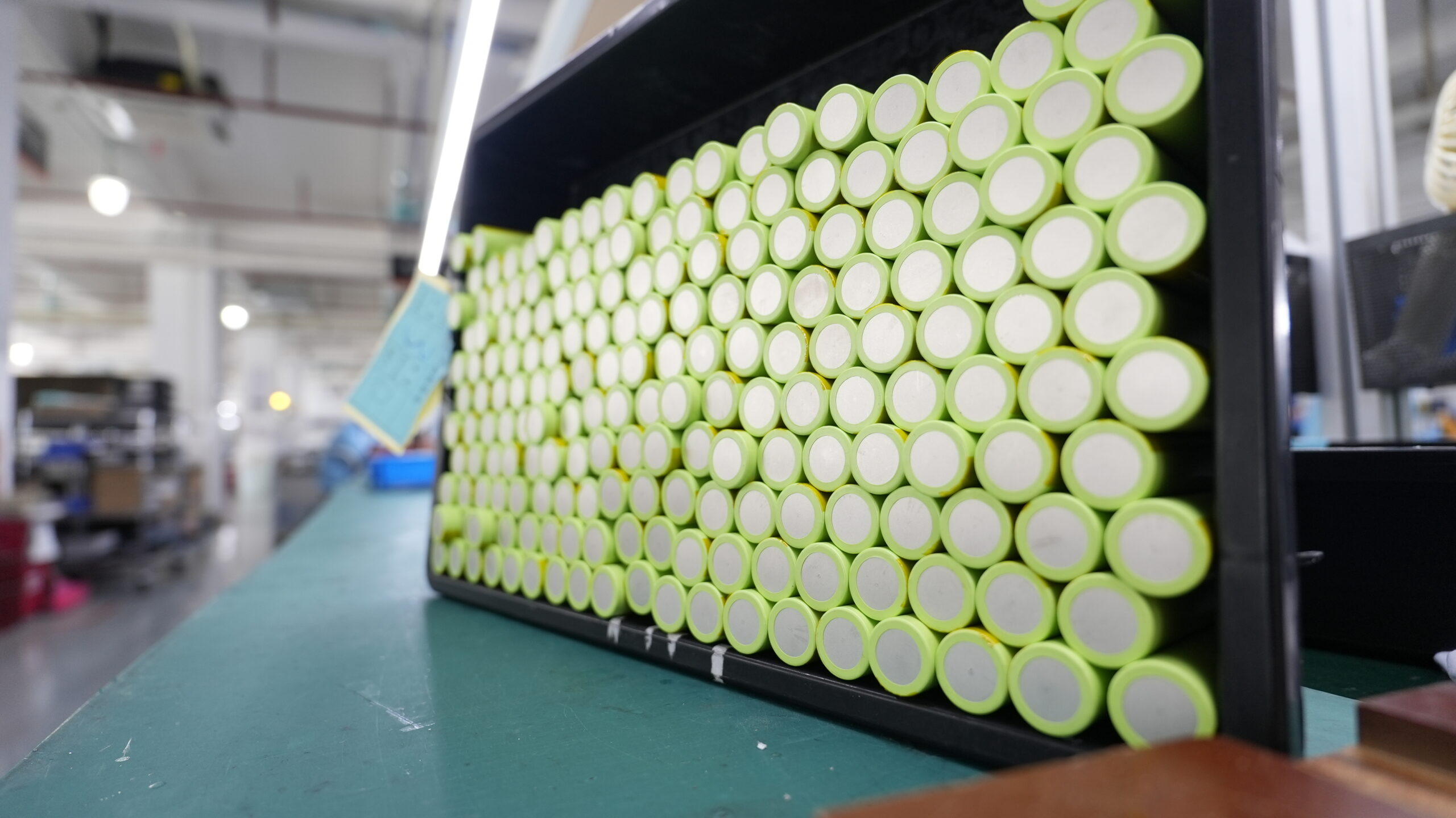
1.1 3.7 Volt Battery Features
You need to understand the core specifications of a 3.7v lithium-ion battery to make informed decisions for your battery packs. The nominal voltage of a lithium ion battery cell is typically 3.7V, achieved through low internal resistance and advanced cell chemistry. This voltage aligns with a maximum charging voltage of 4.2V and a typical end-of-discharge voltage between 2.8V and 3.0V. The 3.7 volt battery delivers a balance of power and compact size, making it a preferred choice for modern electronics and industrial applications.
A 3.7v lithium-ion battery offers a wide capacity range. Single cells often provide around 2600mAh, but larger packs can reach up to 10,050mAh. The nominal capacity, measured in ampere-hours (Ah), indicates how much charge the battery can store and deliver under standard conditions. For example, a 100Ah battery can supply 1 ampere for 100 hours or 10 amperes for 10 hours. You should note that the nominal current, or typical current draw, directly impacts battery longevity and efficiency.
Tip: To maximize battery life, keep the charging current below 3A and use compatible constant-voltage/constant-current chargers. Protection circuits are essential to prevent overcharging, over-discharging, and short circuits.
The chemistry of a 3.7 volt battery determines its performance, energy density, and cycle life. The most common cathode material is lithium cobalt oxide (LCO), but alternatives like lithium manganese oxide (LMO), lithium iron phosphate (LFP), and nickel manganese cobalt oxide (NMC) are also widely used. The anode is typically graphite, valued for its stability and conductivity. Some manufacturers add silicon to graphite anodes to boost performance, but graphite remains the industry standard.
You should compare the main lithium ion battery chemistries to select the right solution for your application. The table below summarizes the key characteristics:
Chemistry | Rated Voltage (V) | Gravimetric Energy Density (Wh/kg) | Volumetric Energy Density (Wh/l) | Cycle Life (Complete Cycles) |
|---|---|---|---|---|
LMO (Lithium Manganese Oxide) | 3.7 | 150 | 350 | 300 – 700 |
LFP (Lithium Iron Phosphate) | 3.2 | 177 | 384 | > 4000 |
NMC (Nickel Manganese Cobalt Oxide) | 3.6 | 220 | 500 | 2000 |
NCA (Nickel Cobalt Aluminum Oxide) | 3.6 | 250 | 550 | 1000 |
LCO (Lithium Cobalt Oxide) | 3.6 | 200 | 400 | 500 – 1000 |
LTO (Lithium Titanate Oxide) | 2.4 | 60-70 | 177 | 15000 – 20000 |
NCA and NMC chemistries provide the highest energy densities, making them ideal for applications where weight and space are critical. LFP and LTO offer a long cycle life and enhanced safety, but with lower energy density. Your choice should depend on whether you prioritize high energy density or long cycle life.
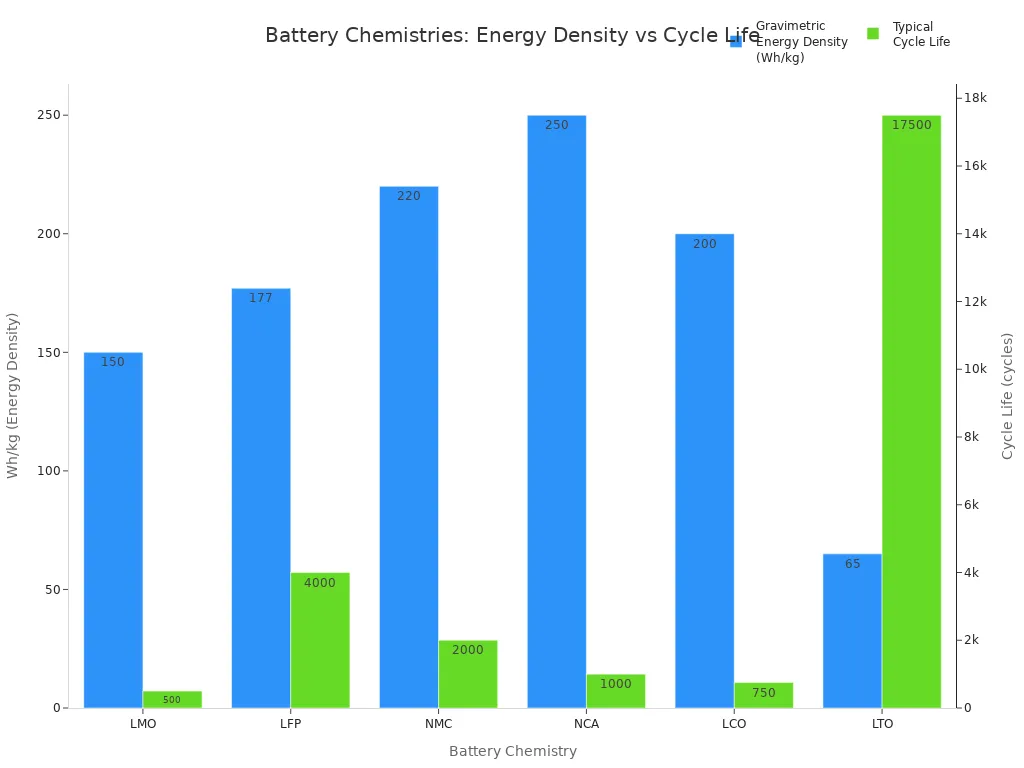
The typical lifespan of a 3.7v lithium-ion battery is about 2 to 5 years or 300 to 500 full charge cycles under recommended usage. High-quality cells may last up to 1,000 cycles or more with careful management. To extend battery life, keep the charge between 20% and 80%, avoid deep discharges, and store batteries at around 50% charge in a cool, dry place. High temperatures above 30°C accelerate degradation, while low temperatures below 0°C reduce capacity and performance.
1.2 18650 Battery Specifications
The 18650 battery is the industry benchmark for cylindrical lithium ion battery cells. Its name comes from its dimensions: 18 mm in diameter and 65 mm in length. This format is widely used in power tools, electric vehicles, laptops, and energy storage systems due to its reliability and scalability.
Specification | Value | Description |
|---|---|---|
Diameter | 18 mm | Standard diameter defining the ’18’ in 18650 |
Length | 65 mm | Standard length defining the ’65’ in 18650 |
Total Volume | ~16.5 cm³ | Approximate volume based on dimensions |
Weight | 45–50 g | Typical weight per cell |
Capacity Range | 1500 mAh to 3500 mAh | Varies by model and application |
The 18650 battery offers several capacity categories:
1500–2000 mAh: Low capacity (used in flashlights, remotes)
2100–2600 mAh: Standard capacity (vape mods, toys)
2700–3200 mAh: High capacity (small power tools)
3300–3500 mAh: Ultra-high capacity (mobile phones, electric cars)
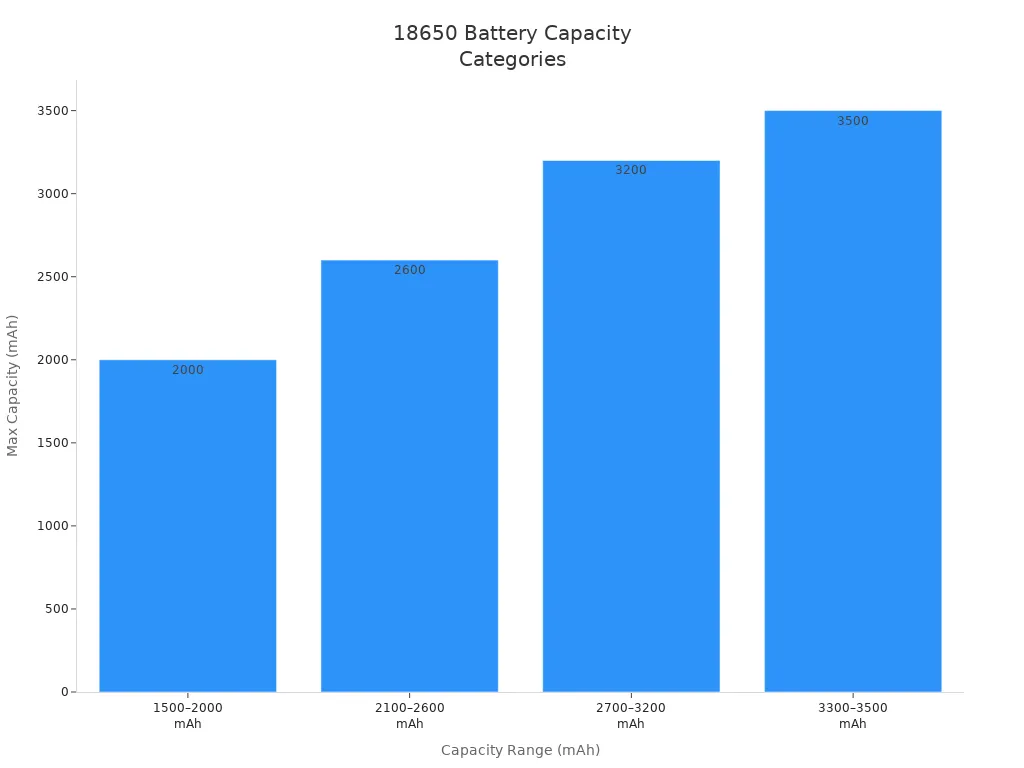
You should pay close attention to the maximum continuous discharge current when designing battery packs. Standard 18650 lithium-ion batteries can sustain continuous discharge currents from about 5A (for high capacity cells) up to 20A or more (for power cells). For example, a 2000mAh 18650 cell can provide 20A continuously, but operating at maximum current raises cell temperature to about 50ºC. To ensure safety and maintain performance, keep continuous discharge currents low (around 0.5A) and avoid exceeding the rated limits.
Battery Model | Capacity (mAh) | Continuous Discharge Rating (CDR) (A) |
|---|---|---|
Panasonic NCR18650B | 3400 | 4.9 |
LG HB6 | 1500 | 30 |
Samsung 25R | ~2500 | ~20 |
LG HG2 | ~3000 | ~20 |
Samsung 30Q | ~3000 | ~15-20 |
The self-discharge rate for 18650 batteries is low, typically 1% to 3% per month, depending on cell quality and ambient temperature. This low self-discharge supports long-term storage and reliable backup power.
When comparing the 18650 battery to other cylindrical formats, such as the 21700, you will find that the 21700 offers about 50% more capacity and 20% higher energy density. However, the 18650 remains popular due to its mature supply chain and cost optimization, even though it has limited potential for further energy density improvements.
Note: Always integrate protection circuits in your lithium ion battery packs to prevent overcharging, over-discharging, and short circuits. This is critical for both safety and long-term performance.
Recent advancements in lithium-ion battery technology include solid-state batteries, silicon anode materials, and advanced recycling methods. These innovations improve safety, increase energy density, and support sustainability in battery manufacturing and lifecycle management.
Part 2: Usage and Safety
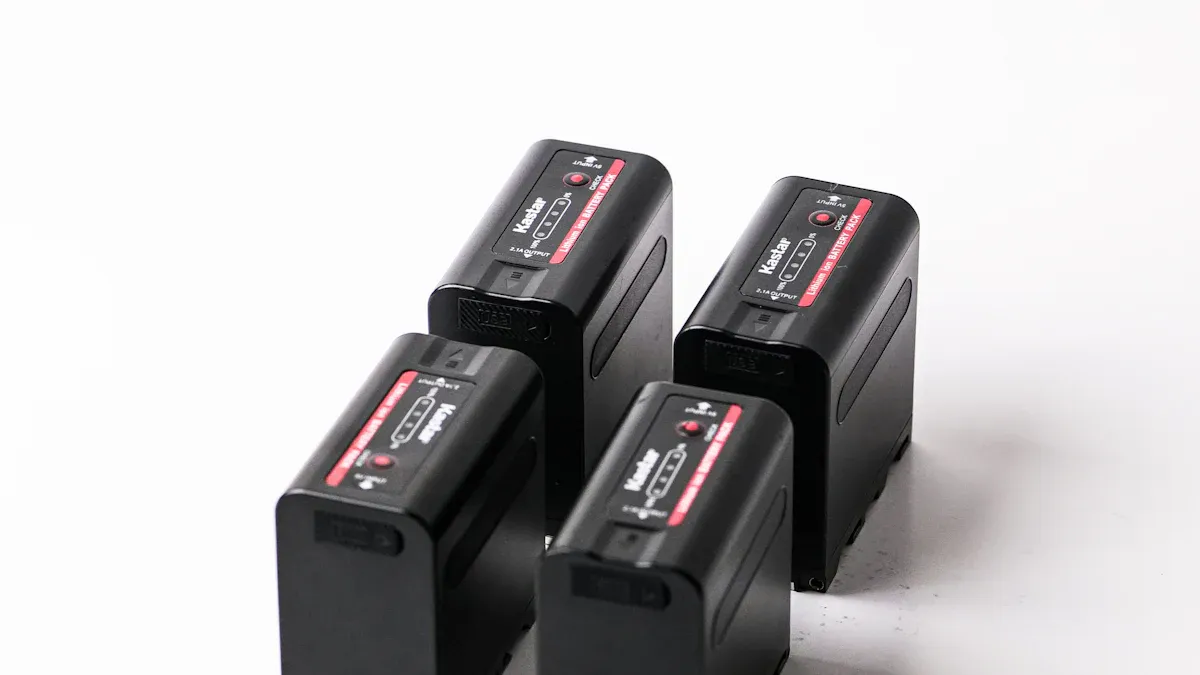
2.1 Applications
You encounter 3.7V lithium ion battery packs and 18650 cells across a wide range of sectors due to their high energy density, reliability, and scalability. These batteries drive innovation in both industrial and consumer markets. Here are the most common application areas:
Medical Devices: Portable diagnostic equipment, infusion pumps, and monitoring systems rely on 18650 lithium ion battery packs for uninterrupted operation and mobility.
Robotics and Drones: Lightweight, high-discharge 18650 batteries power autonomous robots, industrial drones, and robotic vacuums, supporting advanced automation and logistics.
Security Systems: Surveillance cameras, smart locks, and access control devices use lithium ion battery packs for backup power and wireless deployment.
Infrastructure and Transportation: Electric vehicles, e-bikes, e-scooters, and smart traffic systems depend on 18650 cells for efficient energy storage and delivery.
Consumer Electronics: Smartphones, tablets, laptops, wearables, and wireless audio devices all utilize 3.7V lithium ion battery technology for compact, long-lasting power.
Industrial Equipment: Cordless power tools, portable scanners, and OEM custom battery packs benefit from the robust performance and flexibility of 18650 batteries.
You should always match the battery chemistry, capacity, and discharge rate to your specific application. High-drain devices, such as power tools and robotics, require batteries with high discharge ratings and advanced safety features.
2.2 Charging Requirements
Proper charging is essential for maximizing battery performance and ensuring safety. The 3.7V lithium ion battery uses a two-stage charging process:
Constant Current (CC) Phase: The charger applies a steady current until the battery voltage reaches 4.2V per cell.
Constant Voltage (CV) Phase: The charger maintains 4.2V, allowing the current to taper off as the battery approaches full charge.
You must never exceed the 4.2V charge cut-off voltage. Overcharging can cause capacity loss, overheating, or even fire. Always use chargers designed for lithium ion battery packs, as they regulate both voltage and current. For batteries with protection circuit boards, you can use a 5V supply, but the internal circuitry ensures the cell voltage remains at 4.2V.
Key charging guidelines include:
Maintain charging temperatures between 15°C and 35°C for optimal safety and performance.
Start charging when the battery voltage drops below 3.6V, and stop at 4.2V.
Avoid charging at excessive currents; match the charger’s output to the battery’s rated capacity.
Use overcharge protection and over discharge protection circuits to prevent voltage extremes.
Charging Parameter | Recommended Value/Range | Purpose/Notes |
|---|---|---|
Nominal Voltage | 3.7V | Standard for lithium ion battery cells |
Full Charge Voltage | 4.2V | Do not exceed to avoid damage |
Discharge Cut-off Voltage | 3.0V | Prevents deep discharge and capacity loss |
Charging Current | 0.5C – 1C | C = battery capacity (e.g., 2A for 2000mAh cell) |
Charging Temperature | 15°C – 35°C | Ensures safety and longevity |
⚡ Tip: Always select a charger with reverse polarity detection and short-circuit prevention features to enhance safety.
2.3 Safety and Maintenance
You must prioritize safety when working with 3.7V lithium ion battery packs and 18650 cells. The most common safety incidents involve fires and thermal runaway, often triggered by internal short circuits, manufacturing defects, mechanical damage, or improper charging. The following chart illustrates the types of safety incidents and their causes:
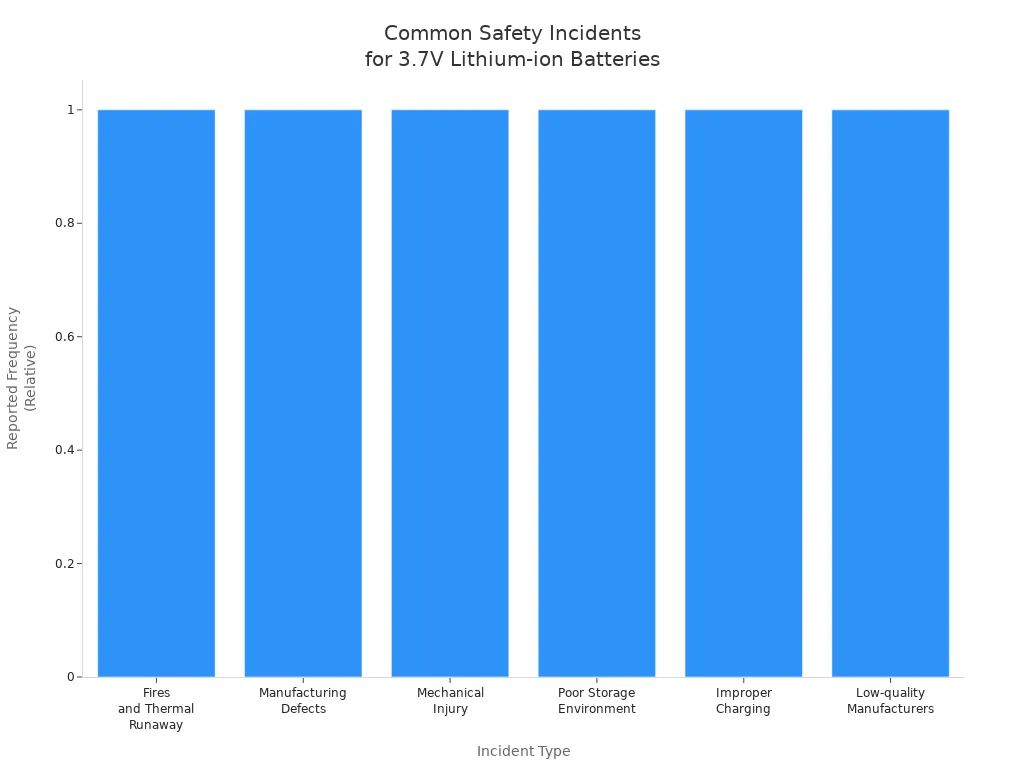
To minimize risks, integrate robust protection systems into your battery packs. Typical protection features include:
Protection Type | Function Description |
|---|---|
Overvoltage Protection | Prevents charging above 4.2V to avoid catastrophic failure |
Undervoltage Protection | Cuts off discharge below 3.0V to prolong battery life |
Overcurrent Protection | Stops charging/discharging at unsafe current levels |
Short Circuit Protection | Prevents damage from sudden electrical shorts |
Thermal Protection | Uses thermistors or cutoffs to detect and prevent overheating |
Reverse Polarity Detection | Prevents damage if battery is installed incorrectly |
You should always use certified batteries from reputable manufacturers. Avoid mechanical abuse, such as crushing or puncturing, and never expose batteries to extreme heat. Store batteries at about 50% charge in cool, dry, fireproof environments. Insulate terminals to prevent accidental short circuits and keep batteries away from combustible materials.
Maintenance tips for maximizing battery lifespan and minimizing safety risks:
Keep batteries between 20% and 80% charge during regular use.
Store batteries at 50–60% charge in a cool, dry place for long-term storage.
Avoid deep discharges and overcharging; use smart chargers with overcharge protection.
Handle batteries carefully to prevent physical damage.
Replace any battery showing swelling, leaks, or overheating.
Clean battery contacts regularly to maintain efficient charging and discharging.
Monitor battery health using device tools or battery management systems (BMS).
Limit high-performance demands that generate excessive heat.
Use only chargers designed for lithium ion battery packs.
Dispose of batteries at designated recycling centers and insulate terminals before transport.
🔒 Note: Implementing safety measures and regular maintenance ensures reliable performance and reduces the risk of incidents.
You must also comply with transportation and storage regulations. Store batteries at 20–25°C, below 75% humidity, and away from heat sources. Use fireproof storage, insulate terminals, and recharge long-term storage batteries every 3–6 months. During transport, protect batteries from shocks, moisture, and short circuits.
For end-of-life management, recycle all lithium ion battery and 18650 cells at certified facilities. Insulate terminals, store batteries separately, and never puncture or open cells. These precautions support sustainability and reduce environmental impact.
You gain reliable performance from 3.7V lithium-ion batteries and 18650 battery packs by selecting cells with robust safety features, certified to standards like UL 2054 and IEC 62133. Maintain batteries with proper charging, moderate depth of discharge, and regular inspections. The table below highlights essential certifications for battery safety and compliance:
Certification | Description | Relevance |
|---|---|---|
UL 1642 | Safety testing for lithium cells | North America |
UL 2054 | Battery pack safety | Portable packs |
IEC 62133 | International safety | Global trade |
UN38.3 | Transport safety | Shipping |
CE Marking | EU compliance | Europe |
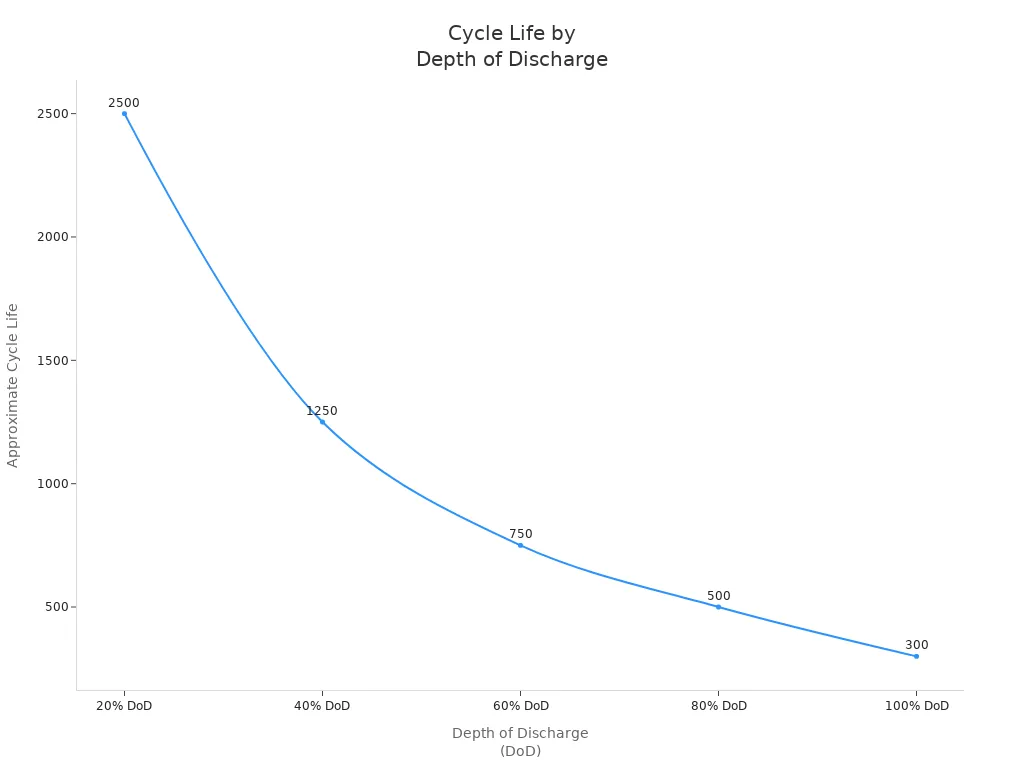
Prioritize certified 18650 battery packs and maintain strict safety protocols to protect your business and extend battery life.
FAQ
What makes the 18650 battery ideal for industrial lithium battery packs?
You benefit from the 18650 battery’s high energy density, consistent performance, and scalable design. These features support reliable operation in demanding industrial lithium battery pack applications.
How do you ensure safe integration of 18650 cells in battery packs?
You must use certified 18650 cells, integrate advanced protection circuits, and follow strict assembly protocols. These steps help prevent overcharging, overheating, and short circuits in lithium battery packs.
Can you mix different 18650 chemistries in one lithium battery pack?
You should never mix 18650 chemistries within a single lithium battery pack. Each chemistry has unique voltage, capacity, and safety requirements that must remain consistent for optimal performance.
What are the main differences between 18650 and other cylindrical lithium battery formats?
Note: You select 18650 for mature supply chains and cost efficiency. Choose 21700 for higher capacity needs.




